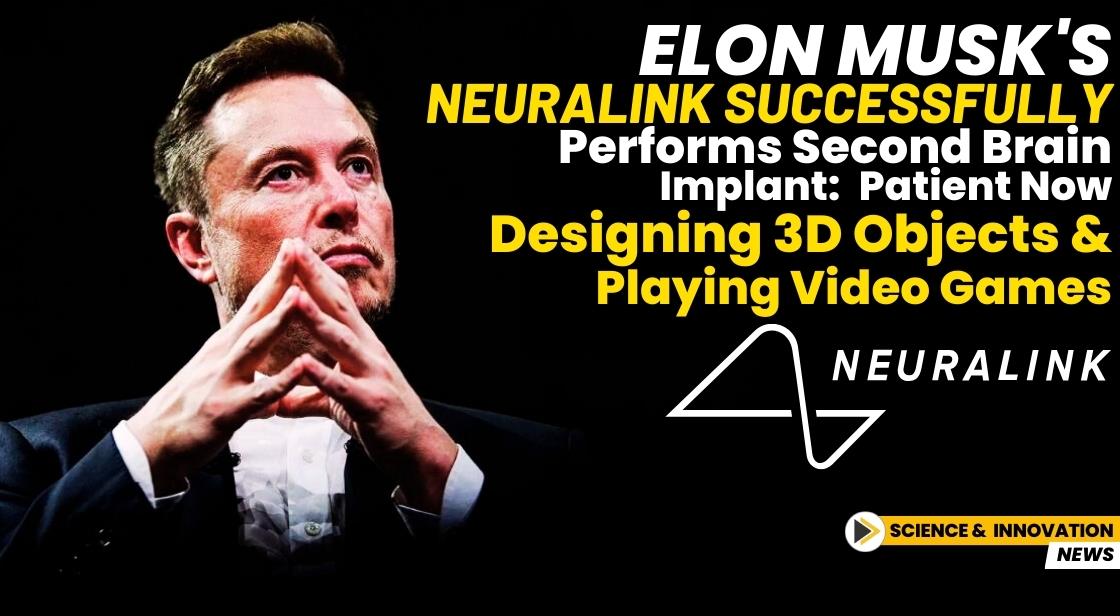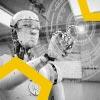Elon Musk's Neuralink Successfully Performs Second Brain Implant: Patient Now Designing 3D Objects and Playing Video Games

News Synopsis
Elon Musk's pioneering brain-computer interface company, Neuralink Corp, has announced a significant breakthrough with its second brain implant surgery. The procedure, performed on a patient named Alex, was reported to have gone smoothly, marking a notable advancement in the company’s mission to merge humans with machines.
Following the successful surgery, Alex has demonstrated remarkable capabilities, including the ability to design 3D objects and play complex video games like Counter-Strike 2.
The success of this procedure contrasts with the challenges faced during the first implant surgery on a patient named Noland Arbaugh, who experienced a complication where the electrode threads began retracting from his brain. Neuralink addressed this issue in their latest procedure by implementing several precautionary measures.
In a blog post, Neuralink stated, “To reduce the probability of thread retraction in our second participant, we implemented a number of mitigations, including reducing brain motion during the surgery and reducing the gap between the implant and the surface of the brain.”
For the first patient, Neuralink made post-surgery software adjustments that significantly alleviated the issue, showcasing the company’s adaptive approach to overcoming technical challenges.
Neuralink's Future Innovations and Upgrades
Neuralink Prepares for Major Enhancements
Elon Musk’s Neuralink is not stopping at just successful surgeries. The company is actively working on developing new features for its brain interface device, known as Link. These future upgrades are expected to allow patients to control on-screen cursors and digital devices with even greater precision, potentially through click-by-click actions.
The company’s vision extends to enabling the Link device to decode multiple simultaneous movement intentions and recognize handwriting intents, which could significantly speed up the writing process for patients.
“These capabilities would not only help restore digital autonomy for those who are unable to use their limbs, but also restore the ability to communicate for those who are unable to speak, such as people with neurological conditions,” Neuralink wrote in its blog post.
Currently, the Link device is specifically designed for patients suffering from quadriplegia and other severe mobility limitations. However, Elon Musk has hinted at future applications of Neuralink implants that could enhance the abilities of healthy individuals, potentially aiding in functions such as memory enhancement.
Alex's Journey: From Automotive Technician to Neuralink Pioneer
Meet Alex: The Patient Behind Neuralink’s Latest Success
The blog post also shed light on Alex, the second patient to receive Neuralink’s brain implant. Alex, a former automotive technician, sustained a spinal cord injury that significantly impacted his mobility. Following his surgery at the Barrow Neurological Institute in Phoenix, Alex was discharged the next day. His recovery has been swift and impressive, with Neuralink reporting that he is now able to use computer-assisted design (CAD) software to create custom mounts for his Neuralink charger.
This success story highlights Neuralink’s potential to dramatically improve the lives of individuals with severe mobility issues. Alex's experience demonstrates the real-world applications of Neuralink's technology and its capacity to restore not just movement, but a level of digital autonomy previously lost.
What’s Next for Neuralink?
Expanding Trials and Musk's Vision for the Future
Elon Musk has shared ambitious plans for Neuralink, aiming to have the device implanted in more patients by the end of the year. These patients are participating in Neuralink’s Prime study, an experimental trial that is closely monitored by the medical community and tech enthusiasts alike.
Musk’s long-term vision includes broadening the application of Neuralink’s implants beyond medical necessity, potentially offering enhancements for healthy individuals. This could lead to revolutionary developments in how humans interact with technology, merging biological intelligence with artificial capabilities.
You May Like









